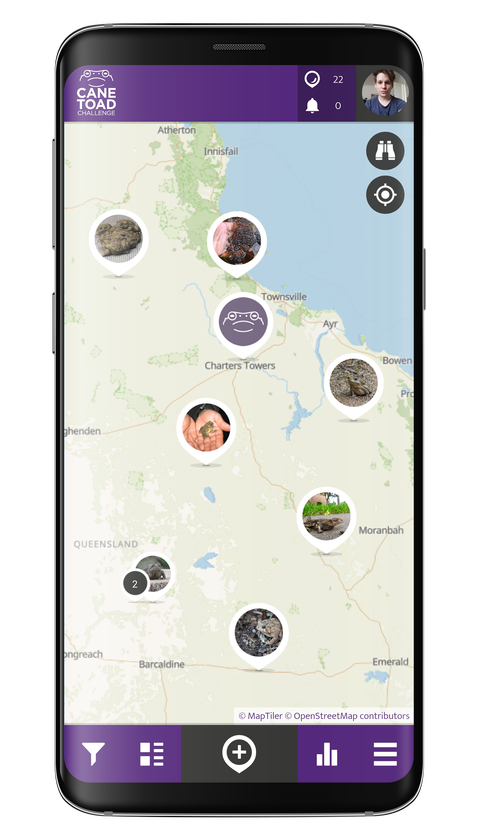The purpose of the App Cane Toad Challenge is to support Citizen Science, to inspire the public, media, scientists, authorities and decision makers, to catalyse awareness and gather data, to inform the development and implementation of more effective cane toad control policies and practices.
Cane toads reproduce at an astonishing rate, can eat just about anything, and are highly poisonous at all life-stages (eggs, tadpoles and adults). The release of ~100 cane toads in Australia a mere 80 years ago, launched an invasion now numbering in 100's of millions, devastating native species and ecosystems as it advances across the nation.
Cane toads poison and kill lizards including large goannas, and crocodiles. Australian snakes, some of the most venomous in the animal kingdom, succumb to toad poison, as do many iconic native species (northern Australian quoll), and other furry friends (dogs and cats).
Although the cane toad is an unwanted invader, capable of poisoning and killing native predators (and pets), and damaging fragile native ecosystems, it is a requirement that all Citizen Scientists who use the CTC APP agree to best practice in the safe and humane capture, handling, euthanasia (cool-freeze) and disposal of cane toads. This should be reflected both in the behaviour and methods used in TOAD SPOTTING, TOAD BUSTING and TADPOLE TRAPPING, and in all comments and images uploaded into the Cane Toad Challenge App.
https://www.spotteron.net/apps/regional-community-science-projects/cane-toad-challenge#sigProId37b570d8db
The Institute for Molecular Bioscience
The Institute for Molecular Bioscience is a global leader in multidisciplinary life sciences research, bringing together 500 researchers from across the globe for disease discovery, application and sustainable futures.
Their research is framed through six research centres focusing on superbug infection, pain, heart disease, inflammation, solar biotechnology and the interplay of genomics and disease. Scientists also undertake research in cancer, brain injury and disease, the environment and agricultural solutions. Through their research programs and vision, the Institute for Molecular Bioscience aims to inspire the next generation of scientists.






